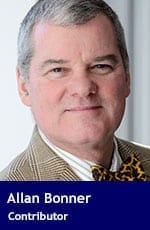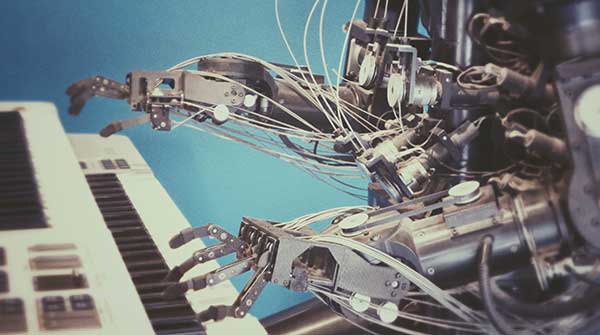But will CoT be an employee or the boss?
 Good night, Mr. Williams. I’ll turn off the lights.”
Good night, Mr. Williams. I’ll turn off the lights.”
So says the ceiling-mounted speaker near the elevator of the modern office building featuring the convergence of Artificial Intelligence (AI), computers, the Internet of Things (IoT), and Policy as Code (PoC) programming.
In short, the building knows that Mr. Williams is the last to leave and will do as promised – not only turn out the lights but also program the coffee maker to start in the morning and get floors cleaned by robot vacuum cleaners and floor polishers. If Mr. Williams, or anyone else comes back into the building, this convergence of technology (CoT) will wake up the elevators and lights and stop the floor cleaning. If not, room and fridge temperatures will be adjusted for the seasons and contents until adjusted again in time for the arrival of staff. Window blinds are automated, as are screens to hide the contents of desktop computers.
 |
| Related Stories |
| We need to control big tech. But how?
|
| How artificial intelligence will change our world
|
| Artificial intelligence is reshaping food retailing
|
But CoT’s overnight shift has just begun. It knows the work habits of all workers and will save documents on desktop computers and shut them down for routine maintenance and updating of software. Pop-ups, passwords, and other diversions are a thing of the past. CoT orders office supplies and items for the lunch and coffee rooms. There is a constant review of which employees can access specific databases, documents, and company information. Onboarding features instant access. Outplacement triggers denial of access.
CoT also works offsite, maintaining employees’ notebooks and personal devices in the same way. CoT directs employees to use their personal devices for accessing unauthorized sites, reminds them to make social media postings promoting the employer, and watches over their homes and self-driving cars. Family members are denied access to company devices. When some workers exceed work hour thresholds, they are told they are losing productivity and that their computers will soon shut down. CoT uses information on medical history, prescriptions, diet, and other metrics to make this decision. Productivity is monitored and tied to compensation and can be enhanced through exercise and diet.
Workers are reminded to take their medication and stop for the night when on vacation. Heads-up display terminals in cars provide information on hotels, emergency services, physicians’ offices, hospital locations, drug stores, massage and physio clinics, and other services.
CoT maintains private homes while employees are on vacation. Temperature is monitored, lights turned on and off, and second cars are moved around the driveway to make the home look occupied. Bills are paid automatically, district energy powers dozens of homes at the same time, solar panels are rotated, and the cumulative savings are passed on to the employee. Excess power is sold back into the grid, and profits are shared between the employer and employee. These savings are part of the modern compensation package.
Once back home, screens show news and educational programming that was missed and reminds school-age children of assignments and enrichment programmes.
Will CoT be an employee or boss?
Allan Bonner was the first North American to be awarded an MSc in Risk, Crisis, and Disaster Management. He trained in England and has worked in the field on five continents for 35 years. His latest book is Emergency! – a monograph with 13 other authors on the many crises that occurred during the pandemic.
For interview requests, click here.
The opinions expressed by our columnists and contributors are theirs alone and do not inherently or expressly reflect the views of our publication.
© Troy Media
Troy Media is an editorial content provider to media outlets and its own hosted community news outlets across Canada.

